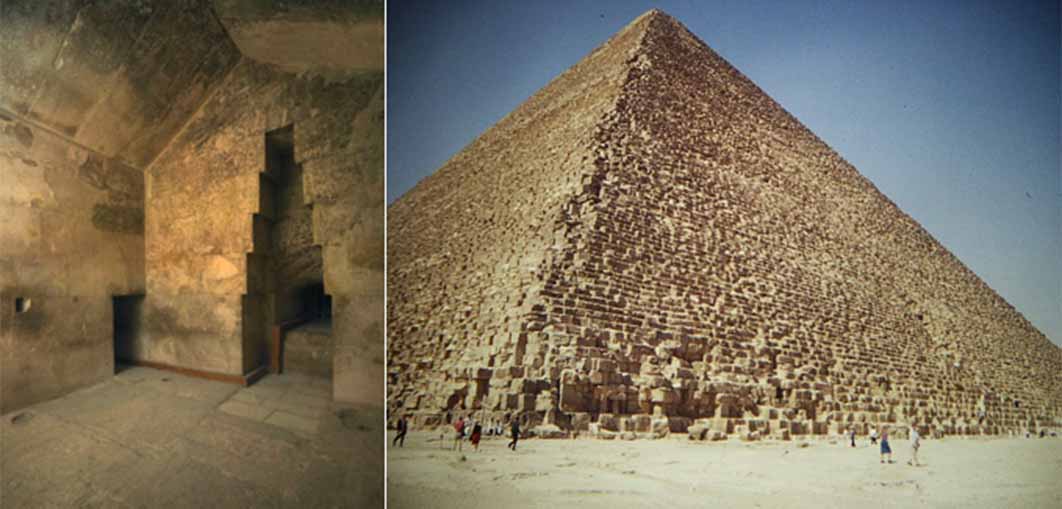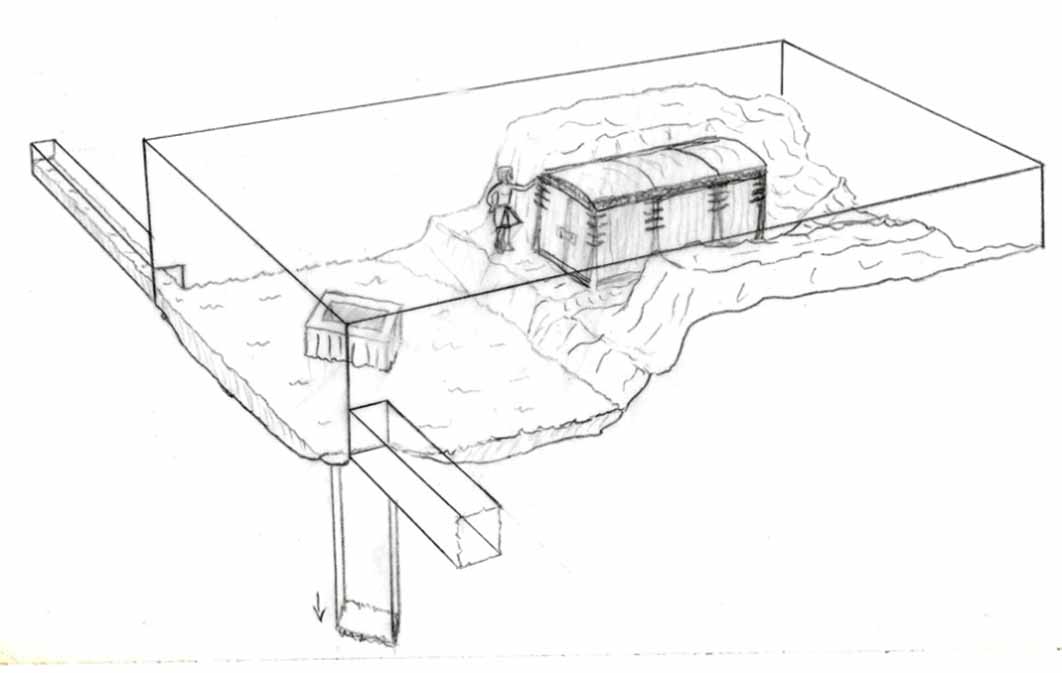
A Watery Solution to the Enigmas of Khufu Pyramid’s Queen’s Chamber
Following up on my recent article on the ante-chamber in the Khufu pyramid, published on Ancient Origins public site, in which I argued it was a device designed to open and close more than once, this article refurnishes the Queen’s chamber, with a theory that could answer several key questions. All its unexplainable features: the ‘missing layer of tiles’ on the floor, the puzzling niche in the east wall, and the mysterious ‘ventilation canals’ turn into purposeful details. All you need is to add some water!
The Subterranean Chamber
The Subterranean chamber measures roughly 8 by 16 meters (26.25 by 52.50 ft.), longest in the east-west direction. In the eastern half a square hole, turned 45 degrees, is dug deep into the bedrock, and probably once reached ground water. From the southern wall a small square corridor proceeds a little southwards then ends. In the western half a considerable amount of bedrock is left, giving an unfinished impression.
- Unraveling the Mystery of the Great Pyramid Air-Shafts
- Egyptologists Reveal a Lost Chamber in the Great Pyramid With Cosmic Rays

Subterranean chamber refurnished. (Author provided)
Many believe that this chamber was originally intended as burial chamber but was abandoned during construction, thus the pile of bedrock. If, however, the chamber follows the order of the elements, this is the earth chamber, Geb’s chamber. What better way to demonstrate this than by including bedrock?
A closer look reveals that this actually could have been the burial chamber, if Khufu was buried here at all. It was customary to bury the body in an underground chamber and have an offering chamber above it because it was the earth god Geb who received the body of the deceased. There is even a flat area 2 by 5 meters (6.56 by 16.40 ft.) where it would be possible to assemble a coffin or sarcophagus.
The Greek historian Herodotus visited Egypt c. 500 BC (c. 2000 years after Khufu). He wrote that he was told by priests that the king lay buried beneath the pyramid on an island in a water-filled chamber, into which the water came through a brick canal - an astonishingly precise description of how the chamber may have looked.
And if you look at the bedrock left in the chamber it’s an ‘island’ onto which the coffin could be placed. The vertical shaft probably acted as a well to obtain water. A frame of wood, eventually tightened by clay, would restrain the water from running back. There even is a ledge it could rest on. With the right amount of water it would look as if the water flooded in from the canal in the southern wall, as demonstrated in the drawing above.
Some believe that Herodotus referred to the existence of another subterranean chamber and others say he was misinformed. But as you can see, it is not necessary to search for another chamber. You just have to place a wooden frame in the well and hoist some water up!
My drawing of the subterranean chamber shows how a small change can have a large effect. The chamber’s ‘mysterious’ well, could simply have been a functioning well as we know them. Water hoisted up in the chamber would create a tableau illustrating how Khufu’s sarcophagus could have actually rested under the pyramid, ‘on an island in a lake, with water coming from an artificial canal,’ as the Greek historian Herodotus was told.




